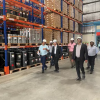DIC Keeping up with ink demands, innovating around new products - The Noel DCunha Sunday Column
DIC: Keeping up with ink demands, innovating around new products - The Noel DCunha Sunday Column
With 36 years at the global printing and coating company, Masamichi Sota is familiar with its footprints in India. “We recognise the potential for growth in this market and are dedicated to supporting its development.”
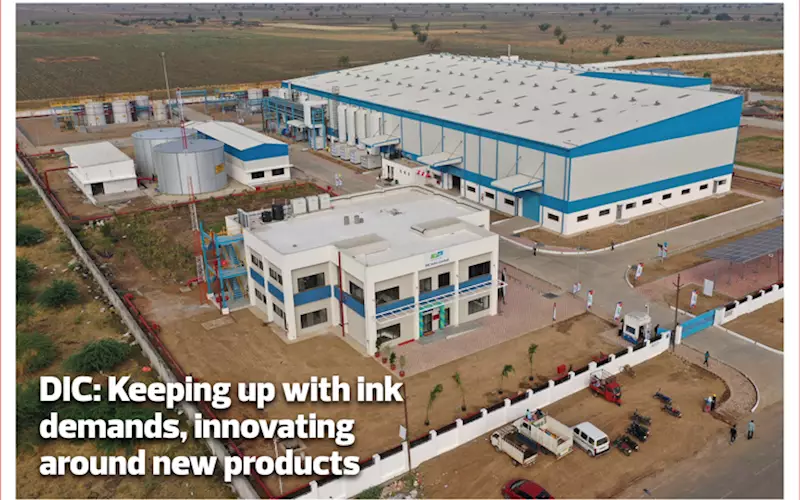
ND: Welcome to India, Sota San. What is your sense of the industry in India?
MS: The Indian industry is very active. I am very curious and attracted to the market.
ND: What is the vision you have for DIC in India?
MS: We have recently launched a new UV ink manufacturing facility in Saykha, situated in the Bharuch district of Gujarat. Following the closure of our Kolkata factory, we have been working tirelessly to expand our business in the Indian market. Our new facility is equipped with cutting-edge technology and a skilled workforce that will enable us to produce high-quality ink products that meet the specific needs of our customers. We are excited about the potential this new plant holds for DIC, and we look forward to continuing to serve our customers with innovative, reliable, and sustainable products.
ND: How important is the India business to DIC group’s future strategy?
MS: DIC P&G Group operates two companies in India, each with a unique focus and specialisation. DIC India is a leader in the production of printing inks, while DIC Fine Chemicals specialises in the manufacture of paste inks.
Despite the diversity of our businesses in India, we remain committed to our ongoing investments in the Indian market. We recognise the potential for growth in this market and are dedicated to supporting its development. Our investments in the latest technologies, facilities, and collaborations with local partners reflect our long-term commitment to India.
We are confident that our presence in India will continue to create opportunities for growth, innovation, and success for our company. Our focus on the Indian market is unwavering, and we remain committed to delivering the best products and services to our customers while contributing to the growth of the Indian economy.
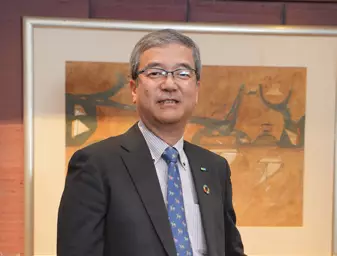
ND: Do you see consolidation in packaging and publication inks business globally. What is DIC’s take on it?
MS:As per the latest industry trends, the publication business is witnessing a downward trend on a global level. On the other hand, the packaging industry is showing a relatively positive trend, with a gradual increase in demand observed in recent times. In view of this, we have decided to shift our focus towards the packaging segment to capitalise on the growing demand.
However, our market understanding has led us to observe a steady recovery in the news ink business in the Indian market. This segment shows stable recovery which is driven by the increasing literacy rates, the growing popularity of newspapers and other printed publications in the country and the uniqueness of being a multilingual nation.
As a result, we have decided to allocate appropriate resources towards this market to tap into its potential and expand our presence in this industry. We believe that this strategy will help us achieve our business objectives and enable us to better serve our customers.
ND: The packaging industry in India has been a solid market, and we have observed a significant uptick in the publication business as well. Given this context, we are keen to hear your thoughts on these developments.
MS: Indeed, the packaging business is on the rise, and we are strategically capitalising on this trend. We have introduced a new product line to meet this demand. In addition to inks, we now offer a range of adhesives catering to the packaging market. This product line expansion aims to provide our customers with a more comprehensive range of solutions to meet their needs. With our new line of adhesives, we aim to enhance the durability and functionality of our packaging products and provide a more efficient and effective packaging solution for our customers.
ND: It is worth noting that significant investments have been made in the South, including BOPP polyester and CPP lines, eight colour offset lines, and new converting units with blown film and paperboard expansion. At the same time, we’re observing a trend of international players considering large-scale investments in India. In light of this, what are DIC’s future plans for the industry in India?>
MS: With its three companies, DIC Group is expanding its investments in India. The company recognises the vast potential of the Indian market and industry and strategically focuses on harnessing this potential. DIC India’s vision is to play a significant role in the growth of the Indian economy by investing in local talent, innovation, and cutting-edge technology. The company aims to create a sustainable ecosystem supporting various industries’ growth, including printing, packaging, plastics, and more. DIC is committed to contributing to the country’s development and fostering long-term partnerships with its customers, suppliers, and stakeholders.
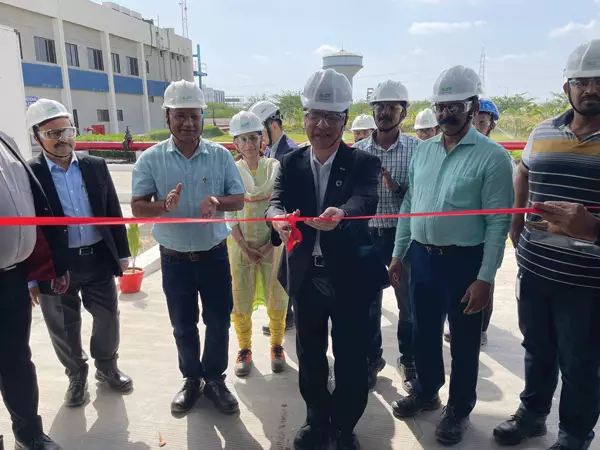
DIC India inaugurated its state-of-the-art manufacturing plant at Saykha, Gujarat, early last year, built at the cost of Rs 110 crores
The plant received an expansion with the inauguration of a new UV offset inks manufacturing plant by Masamichi Sota
ND: Innovation holds the key. As we look to the future, what type of innovative products can India’s packaging and printing industry expect from DIC’s portfolio?
MS: In today’s world, the packaging market is increasingly concerned with achieving a sustainable future. One of our company’s key objectives is to introduce our eco-friendly product to the Indian market and help promote and enable sustainable practices within the packaging industry. Our product has been designed to reduce environmental impact, and we are confident that it will contribute to the shift towards a more sustainable future.
ND: Are there any plans for print and packaging hubs in Africa and the Middle East besides the SAARC nations?
MS: The DIC Sun Chemical Group already has a subsidiary in Africa and the Middle East, which allows the group to have a meaningful presence in those regions. This subsidiary enables the group to leverage local knowledge, expertise, and resources to provide high-quality products and services to its customers.
ND: Okay. That is great. So, moving on, India has traditionally been a gravure segment. How is CI flexo competing with gravure in things like speed to market and sustainability?
MS: Gravure printing, a long-standing player in the market, was initially designed for packaging materials. However, with the evolution of technology, flexo printing has emerged as a strong contender in the Indian market. Flexo printing, utilising a flexible relief plate to transfer ink onto a substrate, offers unique advantages. These include significantly higher printing speed, enhanced cost-effectiveness, and the ability to print on a diverse range of substrates. This distinct combination of benefits is driving more businesses to adopt flexo printing for their packaging needs, gradually positioning it as a compelling alternative to gravure printing.
ND: CI flexo?
MS: It is interesting to note that the shift from gravure to flexo is not just happening in India; it is also a global trend. As a result, as we continue to strengthen our portfolio in gravure, we have decided to focus our attention on flexo inks.
ND: Can you provide information about DIC Corporation and DIC India’s plans for sustainable operations in India?
MS: One of the approaches we are adopting is transitioning from gravure to flexo printing, which is considered a more sustainable option due to its lower energy consumption and reduced waste generation. In addition, we are introducing sustainable products such as biomass-based materials for producing mono-material packaging, which can be easily recycled and reused. These efforts align with our goal of reducing our environmental impact and promoting sustainability in the industry.
RR: Has the packaging segment recovered and come close to pre-Covid-19 levels now?
MB: The packaging segment is close to pre-Covid levels, with some speciality segments it is already above pre-Covid levels.
THE RECYCLING PATH
ND: Okay, a follow-up question on sustainability: Is it possible to be profitable with a circular economy? How do you do this?
MS: While it is true that sustainable products may not yield immediate profits, their potential for long-term profitability is significant. As they gradually secure more market share, their affordability can increase. The growing importance of sustainability to consumers clearly indicates this trend. Businesses increasingly realise the value of adopting sustainable practices and producing sustainable products. The expanding market for these products, driven by consumer demand, is making them more accessible. Therefore, businesses that can offer sustainable products that align with consumer needs stand to contribute to a more sustainable future and potentially reap long-term profitability.
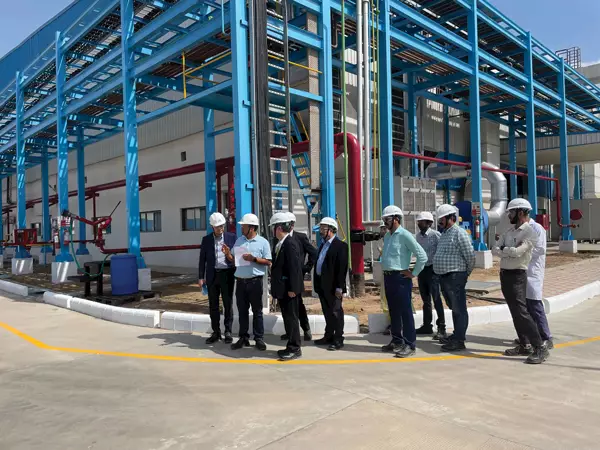
ND: There is this talk about sustainability versus cost. So, if you want to become sustainable, you have to spend money, right? But in a country like India, where you know, a lot of the population don’t have the kind of money to spend, that’s where we ask the question. Can sustainability become profitable in a country like India?
MS: That is a tough question. Sustainability is often associated with higher costs. This means that we need to increase our volume to achieve a balance. By doing so, we can offset the higher costs associated with sustainability. However, timing also plays a crucial role in this equation. If we do not time our efforts correctly, we may not be able to gain the full benefits of a sustainable approach. Therefore, it is essential to carefully plan and execute our sustainability efforts to ensure we achieve the desired outcomes.
ND: Can you elaborate?
MS: As I said, timing is crucial in transitioning to a more sustainable future. The enforcement of environmental laws and regulations to promote sustainable products is well-established in Europe, while progress in Asian countries has been slower. In the Indian industry, toluene, a harmful chemical used in inks, was banned a few years ago to promote safer alternatives. However, despite the ban, some customers continue to use toluene inks, which can have adverse health and environmental impacts.
The pace and strength of society’s movement towards sustainability are key determinants of the success of such efforts. In Asia, the transition towards sustainability is still in its early stages, and it requires a concerted effort from all stakeholders to promote the use of safer and more sustainable products. Governments, businesses, and consumers all play a crucial role in this transition, and their actions can significantly impact the environment and human health.
In conclusion, while progress towards sustainability has been slower in some regions than others, there is a growing recognition of the need to transition towards more sustainable practices.
ND: A little technical question: What transpires with electron beam curing?
MS: EB is a curing system. At the present moment, we are promoting the UV system. However, EB is a more safer system against the UV because no more photoinitiator is involved. This makes it an ideal choice for industries that require non-toxic or eco-friendly options.
The key component of EB is the EB lamp, which is becoming cheaper over time. This makes it an affordable option for businesses looking to switch to a more efficient curing system. However, the cost of nitrogen is also a factor to consider when using EB. Nitrogen is used to reduce the oxygen content in the curing environment, which helps to prevent the production of unwanted by-products. Therefore, the cost of nitrogen is an important consideration when selecting the curing system that best suits your needs. Additionally, the cost of electricity may also impact the overall cost of using EB.
So, if the cost of nitrogen and electricity is low, EB can be a cost-effective replacement for UV systems. Moreover, it offers several advantages such as being eco-friendly and safe, making it a viable option for businesses looking to switch to a more efficient curing system.
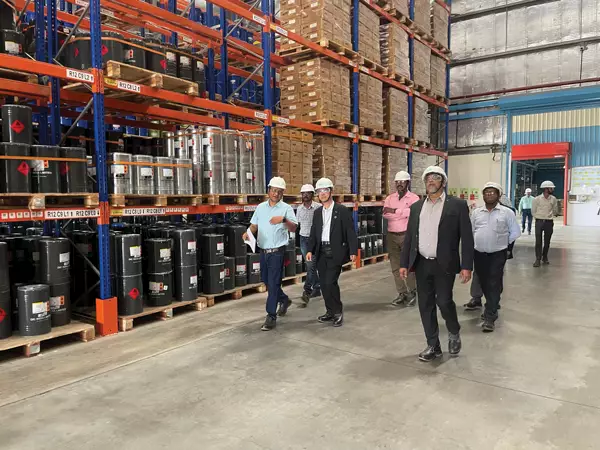
ND: Okay. Is India ready for EB adoption?
MS: I do not have enough information about the cost of electricity and nitrogen in India to provide accurate details. However, in Japan, the cost of electricity and nitrogen is generally very high due to the limited availability of natural resources and the high demand for energy in the country. The Japanese government has implemented various measures to promote energy conservation and encourage using renewable energy sources to reduce the cost of electricity and nitrogen. However, they are still considerably expensive compared to many other countries around the world.
ND: Over the past two years, there have been many conversations about a switch from MLP to single-layer polymer. The manufacturers have taken some steps in BOPP/CPP/BOPET/BOPE/MDO film/coating film, to name a few. What sort of R&D ops are you conducting along with the film manufacturers to facilitate this?
MS: Multi-layer films consist of different layers, each with a specific function, such as providing strength, barrier properties, or aesthetic appeal. In contrast, mono-material films are made from a single type of material and lack the performance benefits of multi-layer films but have a merge ability. This is the key.
We are introducing a new barrier adhesive to enhance the barrier performance of multi-layer films. This adhesive will be applied between the layers to improve the film’s gas and moisture permeation resistance. Furthermore, we are adding a special
coating to the film to serve as an oxygen barrier. This coating will be applied to the outermost layer of the film and will effectively block the passage of oxygen through the film.
Whether we use two, three, or five layers, we require a special coating solution to ensure optimal barrier performance. Using a combination of barrier adhesive and oxygen barrier coating, we can create multi-layer films with superior barrier properties that are ideal for various applications.
ND: Final thoughts and one prediction for 2024?
MS: Considering the current global political climate, unexpected political situations can occasionally arise. As such, I hope 2024 will bring about positive changes and progress. I sincerely hope that the world will see a reduction in political unrest and volatility and, instead, experience a greater sense of stability and harmony. Let us look forward to a better future.








